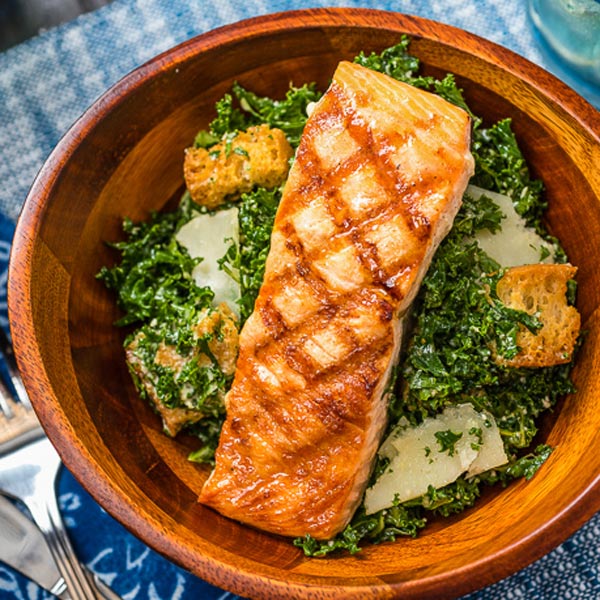In any case, as with any endeavor in the kitchen, there is a bit of technique anyone new to juicing should get familiar with before starting a juice cleanse or a new juicing routine. Get the best flavor with the least amount of effort by following these juicing do’s and don’ts.
✓ Do get the right juicer for your goals.
There are generally two types of juice extractors on the market you can choose from: centrifugal or masticating.

Centrifugal juice extractors have a blade that spins quickly to grind the produce. It then extracts the juice by forcing it through a strainer basket. The fresh juice comes out of the spout while the remaining pulp is ejected into the pulp bin.
Masticating juicers, also commonly referred to as “slow juicers” or “cold press juicers,” use a different extraction method. Fruits and vegetables are slowly ground to a pulp and juice is squeezed out by an auger.
There are benefits to using each type of juicer. Masticating juicers may produce a smoother juice—and do the job more quietly—but they take significantly longer to create juice than centrifugal ones. Masticating juicers are also a little easier to clean, since they don’t have a strainer basket that needs to be brushed clean after each use. In the end, it’s all about personal preference.
✓ Do prep your produce ahead of time.
To make juicing easier in the mornings, you can prep all your ingredients at once. Just wash and cut your fruits and vegetables up, then portion them out into individually bags; that way, you can just grab a bag in the morning and quickly run the ingredients through the juicer.
✓ Do peel citrus fruits, pomegranates, pineapples, melons and mangos before juicing.
In short: peel anything with an inedible or bitter-tasting skin. It’s not necessary to peel other fruits or vegetables, like apples or carrots.
✗ Don’t be so quick to toss the pulp.
The pulp left over after juicing fruits and vegetables is mostly fiber and cellulose which, like the juice, contain vital nutrients necessary for the daily diet and can be used in many ways. There are a number of recipes that use pulp for added moistness and flavor, such as citrus ginger muffins, berry chocolate brownies and even vegetarian chili. You can also use pulp to thicken casseroles or soups; however, like the juice, pulp should be used that day or frozen to avoid loss of vitamins. Pulp is also great used in the garden for compost.
✓ Do choose your greens carefully.
Different types of greens have their own flavor profiles; you might even pick one based on color. Use this guide to help you choose:
- For a peppery flavor, choose arugula or watercress.
- For an alternative to green leaves, choose red-and-white radicchio.
- For flavor with a “bite,” try chicory or escarole.
- For a mild flavor and delicate green color, opt for mache, Boston or bibb lettuce.
- For a deep green color and medium flavor, choose spinach or romaine.
- For a deep green color and stronger flavor, kale and chard are good picks.
✓ Do put foods through the juicer in the right order.
As a general rule, you’ll get better results if you start on a lower power setting (if you have multiple speed settings on your particular juicer) for leafy vegetables or soft fruits and switch to a higher power to do the tougher or harder fruits and vegetables. Tuck in tinier slices of ginger or herbs in between harder fruits and vegetables, which will help to push them through the juicer.
✗ Don’t be afraid to experiment with your own recipes.
The sky’s the limit when it comes to juicing—you can create virtually any flavor you desire when you do it at home. We recommend choosing at least one fruit or vegetable from the following categories for a balanced recipe:
Fun flavors
- Sweet: mango, berries, kiwi, melon
- Tart: lemon, lime, grapefruit
- Earthy: carrots, beets, greens, herbs
Extra-juicy ingredients for volume
- Citrus: oranges, grapefruit
- Vegetables: cucumbers, celery, tomatoes, zucchini
- Other fruits: pears, grapes
Nutritious additions
- Greens: chard, collard greens, kale, spinach, broccoli, romaine lettuce, green cabbage
- Dark orange/red: red cabbage, beets, carrots
Add-ins with a kick
- Spicy: ginger, jalapeno, arugula, turmeric
- Herbal: mint, basil, cilantro
✓ Do make cleanup easier.
Save some cleanup time by lining the pulp bin with a spare grocery store produce bag. For centrifugal juicers, clean the strainer basket immediately after juicing with a soft bristled brush to make easier work of the job.
✗ Don’t keep juice in the refrigerator for more than 3 days.
Generally, it’s best to consume fresh juice as soon as possible. But if desired, you can refrigerate your juice for up to three days in airtight containers.
Browse these juicer recipes to get inspired or start shopping for your new juicer now.

























